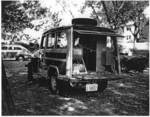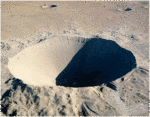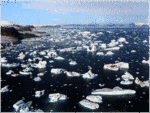The Project
Prospecting
 The Cold War stimulated international competition in the search of innovative ways to prospect natural resources; oil and uranium especially. As prospecting research proved vital to the completion of nuclear programmes, it overlapped diplomatic and intelligence activities in an effort to find out about world reserves and prospecting technologies, especially in “enemy” countries.
The Cold War stimulated international competition in the search of innovative ways to prospect natural resources; oil and uranium especially. As prospecting research proved vital to the completion of nuclear programmes, it overlapped diplomatic and intelligence activities in an effort to find out about world reserves and prospecting technologies, especially in “enemy” countries.
Picture: Truck used for prospecting oil wells in 1945 (Photo courtesy/Mary Scherbatskoy).
Monitoring
 The proliferation of nuclear weapons urged the Superpowers and other nuclear nations to monitor the state of advancement of atomic programmes in foreign countries. A variety of geophysical techniques developed in connection with nuclear testing. In particular, the rise of underground tests propelled the expansion of seismology and world-wide surveillance seismic networks were established to gather data on nuclear explosions.
The proliferation of nuclear weapons urged the Superpowers and other nuclear nations to monitor the state of advancement of atomic programmes in foreign countries. A variety of geophysical techniques developed in connection with nuclear testing. In particular, the rise of underground tests propelled the expansion of seismology and world-wide surveillance seismic networks were established to gather data on nuclear explosions.
Picture: Crater created at Nevada Test Site by the 1962 US nuclear test “Sedan” (NASA photo).
Surveying
 The Cold War made nuclear countries more eager to gather data on the earth and its features (e.g. oceans, glaciers, atmosphere). This urgency matched the need of preparing for nuclear warfare by knowing its environmental conditions.
The Cold War made nuclear countries more eager to gather data on the earth and its features (e.g. oceans, glaciers, atmosphere). This urgency matched the need of preparing for nuclear warfare by knowing its environmental conditions.
Picture: Navigation system for nuclear missiles (from: L.Freedman, Atlas of Global Strategy, 1986)
Transition to environmental analysis
 Knowledge and technologies originally designed for nuclear strategies are now being successfully re-deployed in environmental forecasts, thereby revealing the legacy of Cold War research in our current understanding of climatic and environmental changes. For instance, they are very important in the study of ice-melting in Polar Regions.
Knowledge and technologies originally designed for nuclear strategies are now being successfully re-deployed in environmental forecasts, thereby revealing the legacy of Cold War research in our current understanding of climatic and environmental changes. For instance, they are very important in the study of ice-melting in Polar Regions.
Picture: Icebergs breaking off glaciers at Cape York, Greenland (photo: M.Zinkova).


